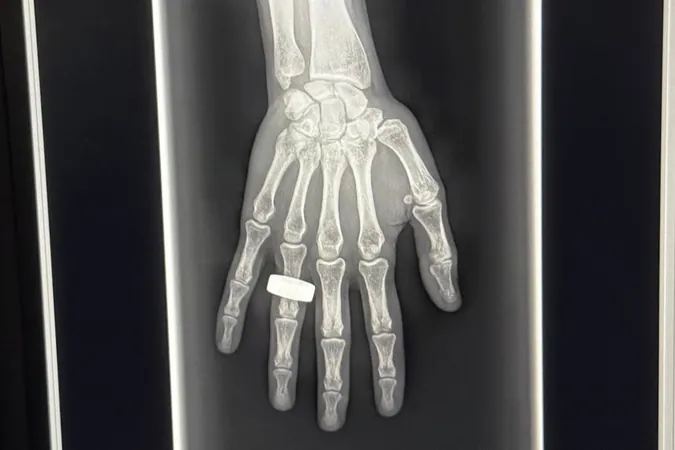
Milestone Achievement: First X-ray Image Captured in Space by Canadian Company
2025-04-07
Author: Michael
Introduction
In a groundbreaking achievement, KA Imaging, a Canadian company, has successfully captured the first-ever X-ray image taken in space. This remarkable event occurred as four space tourists embarked on a spectacular journey around the Earth's poles aboard a SpaceX Dragon capsule, which launched from NASA’s Kennedy Space Center on March 31.
Significance of the Achievement
Amol Karnick, the CEO of KA Imaging and a proud alum of the University of Waterloo, heralded this as a significant milestone, stating, “This is the first X-ray ever done in space. It’s a first for Canadians in this domain.” The mission, chartered by bitcoin investor Chun Wang, marked a historic series of firsts—being the first human spaceflight to orbit the Earth above the poles, and the first Pacific splashdown for a crewed spacecraft in half a century.
The Captured Image
Shortly after returning to Earth, Wang shared on X (formerly Twitter) the medical X-ray image that featured a hand adorned with a ring. KA Imaging noted that this image is reminiscent of the first X-ray taken over a century ago by Wilhelm Roentgen, which changed the way medicine assessed patient injuries.
SpaceXray Project
The X-ray captured in space is part of the pioneering SpaceXray project, one of twenty-two scientific studies conducted during the mission. It focuses on monitoring the health of astronauts, who face unique challenges in microgravity, particularly regarding bone mineral density. “Monitoring the health of astronauts is critical, given the negative effects that prolonged weightlessness can have on their bodies,” Karnick emphasized.
Innovative Technology
The innovative X-ray receiver created by KA Imaging is approximately the size of a large laptop and is capable of distinguishing between various tissues—such as bones and soft tissues like lungs and hearts. This advanced capability makes it instrumental not only in diagnosing potential space-related health issues like pneumonia and cancers but also provides on-site diagnostic services for spacecraft maintenance.
Training and Equipment
Before the mission, the crew received training on how to operate the X-ray equipment, which included a portable X-ray generator developed by Chicago-based MinXray. The successful image capture in space addresses prior uncertainties regarding potential interference from natural background radiation, which could compromise image clarity. “The initial images we have seen don’t demonstrate any of those concerns, indicating that our technology works effectively even in space,” Karnick reported.
Looking Ahead
Karnick is optimistic that this breakthrough technology could not only enhance astronaut safety but also revolutionize medical imaging in remote or underserved regions on Earth. “We’re grateful to the crew and immensely proud that life in space will be safer and better because of this technology," noted Sheyna Gifford, principal investigator of the SpaceXray study. She added, “Let’s strive to make life on Earth better with these advancements too.”
Conclusion
As we celebrate this monumental step in space medicine, the implications of KA Imaging’s success could usher in a new era of healthcare both in space and back on Earth, where advanced imaging capabilities may be just a flip away.









 Brasil (PT)
Brasil (PT)
 Canada (EN)
Canada (EN)
 Chile (ES)
Chile (ES)
 Česko (CS)
Česko (CS)
 대한민국 (KO)
대한민국 (KO)
 España (ES)
España (ES)
 France (FR)
France (FR)
 Hong Kong (EN)
Hong Kong (EN)
 Italia (IT)
Italia (IT)
 日本 (JA)
日本 (JA)
 Magyarország (HU)
Magyarország (HU)
 Norge (NO)
Norge (NO)
 Polska (PL)
Polska (PL)
 Schweiz (DE)
Schweiz (DE)
 Singapore (EN)
Singapore (EN)
 Sverige (SV)
Sverige (SV)
 Suomi (FI)
Suomi (FI)
 Türkiye (TR)
Türkiye (TR)
 الإمارات العربية المتحدة (AR)
الإمارات العربية المتحدة (AR)